Service Navigation
Search
Various measurement instruments are used within the measurement network formed by the automatic ground-based stations (SwissMetNet). With Switzerland's complex topography and possible harsh weather conditions, developing and operating such a monitoring networkrepresents a particular challenge. All the sensors used comply with the specified certification criteria and the WMO standards regarding precision, ventilation and heating.
Air temperature and humidity
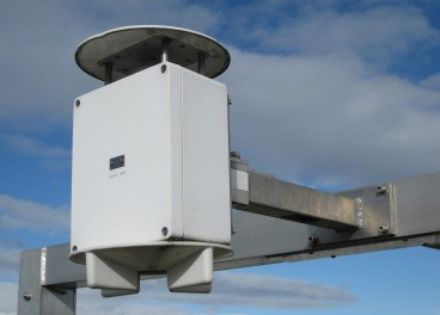
MeteoSwiss uses the Thygan instrument produced by the Swiss company Meteolabor AG for the air temperature and humidity measurements. The ventilated device meets very high standards in terms of measurement precision and is also suitable for use in elevated locations with extreme weather conditions. Temperature measurements are taken using a copper-constantan thermo-element, while humidity is measured with a dew point monitor. Here, a mirror in the hygrometer is cooled until moisture forms on its surface through condensation. The level of humidity can be calculated with precision using the measured dew point temperature.
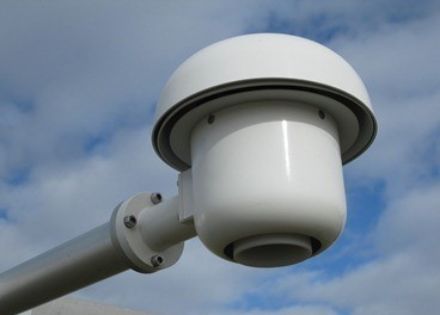
The air temperature and humidity sensors produced by Rotronic are mounted in a weather and radiation shield with active ventilation. Temperature readings are taken using a platinum resistance thermometer (PT100). The relative humidity is determined on the basis of the changes in the properties of a hygroscopic polymer.
Surface temperatures
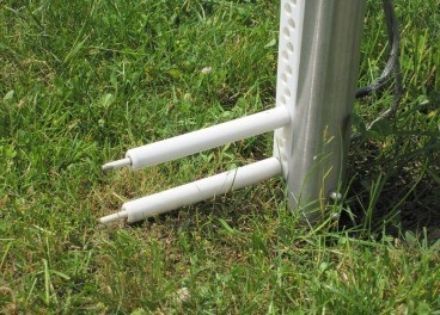
The two white sensors measure the air temperature on the surface and 5 cm above the ground using a platinum resistance thermometer (PT100). These temperature values provide frost hazard information and are used in the agricultural sector and in assessing road conditions. The surface temperature is also an important parameter for boundary-layer meteorology.
Ground temperatures
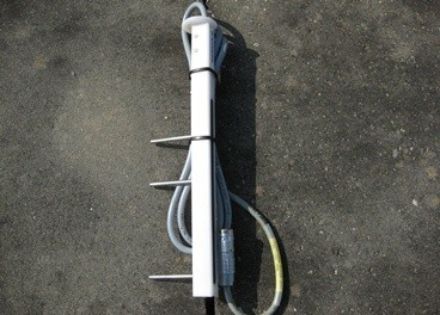
This instrument is used to measure the ground temperature at depths of 5, 10 and 20 cm. As with the devices used to determine the surface temperatures, the measuring principle for this instrument is based on a platinum resistance thermometer (PT100).
Air pressure
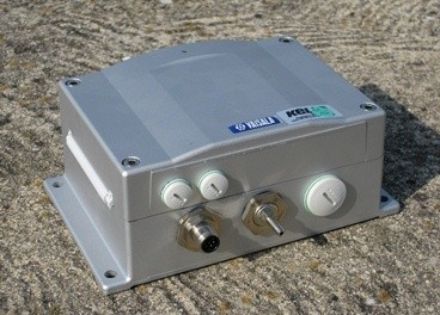
The atmospheric pressure is measured using a digital device produced by Vaisala. The devices stand out thanks to their high level of stability and precision. The PTB330 is delivered with three redundant BAROCAP® sensors, which guarantee high-quality measurements and outstanding reliability.
Wind direction and speed
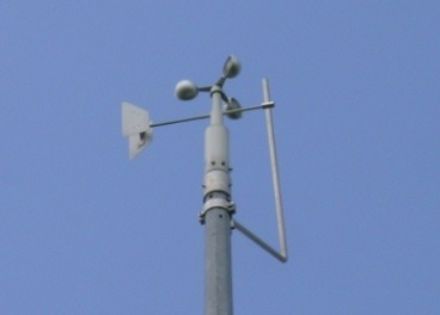
The L14512 instrument produced by Lambrecht detects the wind direction based on the orientation of the wind vane; the position of the wind vane is determined using a potentiometer. The wind strength is measured on the basis of the rotational speed of the cup anemometer, whereby the number of rotations is proportional to the wind speed.
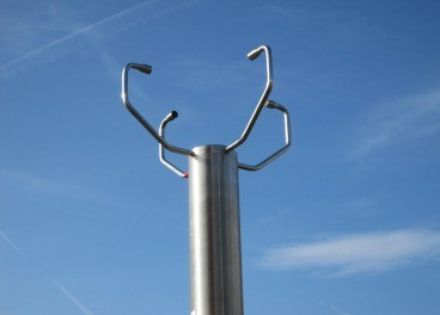
The Ultrasonic Anemometer 2D tool produced by Thies calculates wind data with the help of ultrasonic signals. Two sets of sensor pairs are positioned perpendicular to each other. Here, the differences in the signal propagation times between the individual sensors are used to determine wind speed and direction.
Precipitation amount
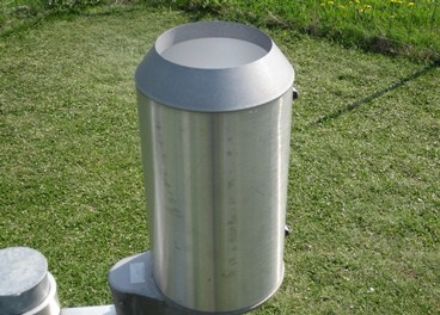
MeteoSwiss uses 1518 H3 and 15188 pluviometers produced by Lambrecht to measure the amount of precipitation. The rain gauges are heated, meaning that solid precipitation such as snow is melted. The measuring system is based on a tipping mechanism. As soon at the container reaches its filling limit upon precipitation falling, it empties itself automatically via a tilting motion. The amount of precipitation is determined on the basis of the number of titling movements per unit of time.
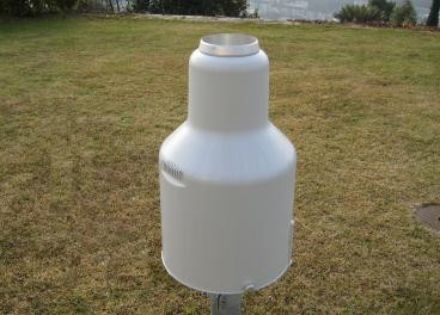
The precipitation measurements of the Pluvio2 produced by Ott are based on the weighing principle. The volume of liquid, solid and mixed precipitation is calculated using a hermetically sealed load cell. The device distinguishes itself thanks to its high level of precision and low maintenance requirements. The modern electronics also simplify the process for checking the quality of the data. Unlike the measuring devices that work using the tipping principle, this device collects the precipitation in a reservoir that needs to be emptied regularly.
Precipitation duration
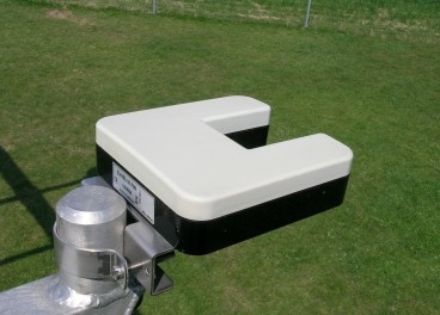
The device produced by Thies registers the start and end of precipitation using a heated opto-electronic sensor. An infrared light barrier recognises precipitation in the form of drizzle, rain, snow and hail.
Snow depth measurement
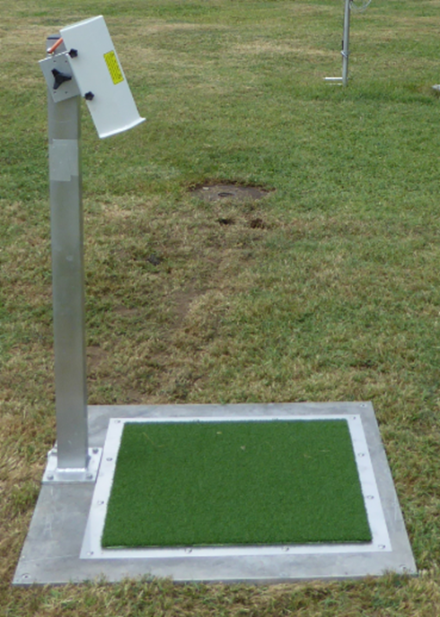
The LDM42A laser rangefinder used by MeteoSwiss to measure snow depth is a high-precision distance sensor that can detect the first millimetres of accumulating snow very accurately.
The accuracy of the measurement is guaranteed by a fixed connection between the laser support and the target. This means that when the ground freezes and the target moves, the distance between the laser and the target does not change. During annual maintenance, the distance to the target is recorded as a reference during the summer period. The system is used at low altitudes in order to accurately measure light snowfall.
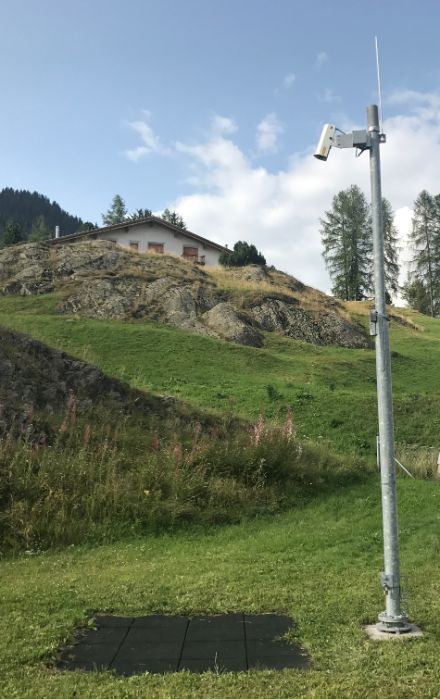
The SHM30 laser rangefinder uses the same principle as the LDM42 to measure the distance between the sensor and the snow surface. The sensor is usually mounted on a fixed support at a certain height above the ground, depending on the expected snow depth at the measurement site. Unlike ultrasonic snow depth sensors, the laser distance measurement is independent of temperature. This measurement system is generally installed in mountainous areas, where large quantities of snow are expected.
Shortwave irradiance
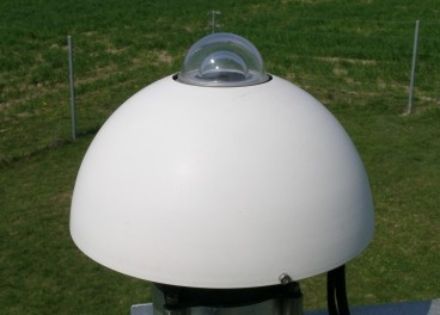
The CM 21 pyranometer produced by Kipp & Zonen measures shortwave hemispherical irradiance (305 - 2800 nm) using a thermopile. The measuring principle is based on a black-coated surface which is warmed up by solar radiation. This thermal energy is converted into measurable voltage which is used to calculate the incident radiation energy.
Sunshine duration
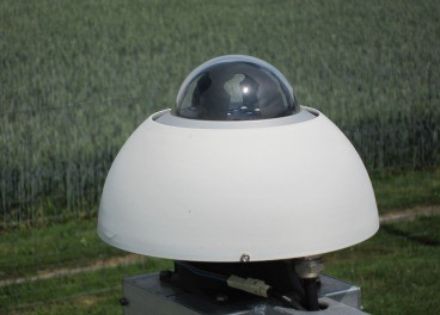
The SPN-1 measuring device produced by Delta-T Devices measures of the sunshine duration and shortwave irradiance. The measuring principle is based on seven independent thermopiles that are shaded to varying degrees by a screen (black plastic construction). Based on these different light conditions – at least one sensor is always in the shade – the sunshine duration and direct and diffuse radiation can be determined.
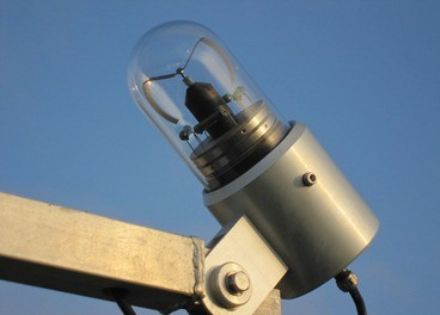
The Solar 111 B measuring device produced by Hänni records sunshine duration. Six small independent photodiodes record the incident solar radiation. The solar cells are shaded successively at short intervals by the quickly rotating blades. All periods during which a minimum difference is exceeded between uninterrupted radiation and the value when shading occurs are defined as periods of sunshine.
Longwave irradiance
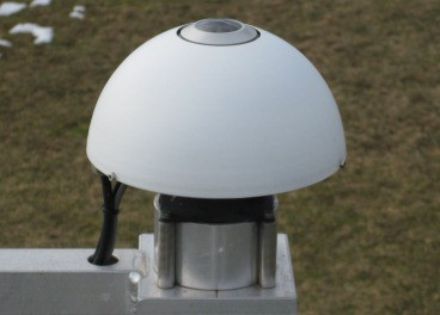
The CG-4 pyrgeometer produced by Kipp & Zonen calculates incident longwave radiation. This primarily involves measuring the thermal (infrared) radiation emitted by the earth's surface and reflected back by the atmosphere. Whereas a transparent glass dome is used to measure shortwave irradiance, the CG-4 pyrgeometer uses a dark silicon dome that can only be penetrated by infrared radiation.
Radioactivity
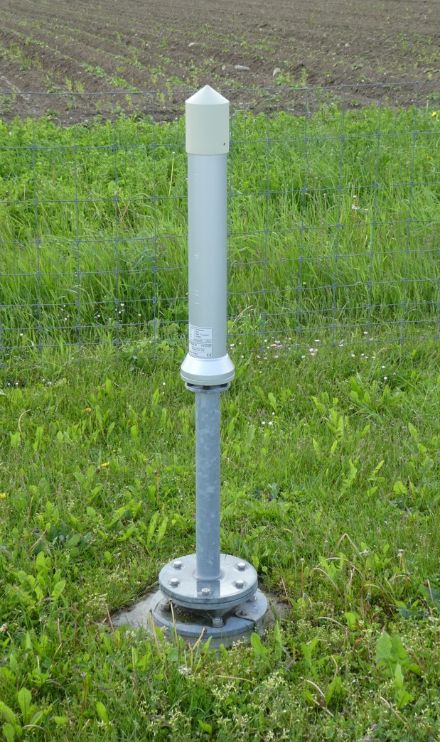
The XL2 measuring device produced by Bertin measures the radioactive radiation (gamma dose rate) of the surrounding area. MeteoSwiss takes these measurements on behalf of the National Emergency Operations Centre. The use of these measurement instruments in SwissMetNet allows for the population to be warned quickly and in a targeted manner in instances of heightened radiation levels. The measuring device itself does not emit any radioactive radiation.